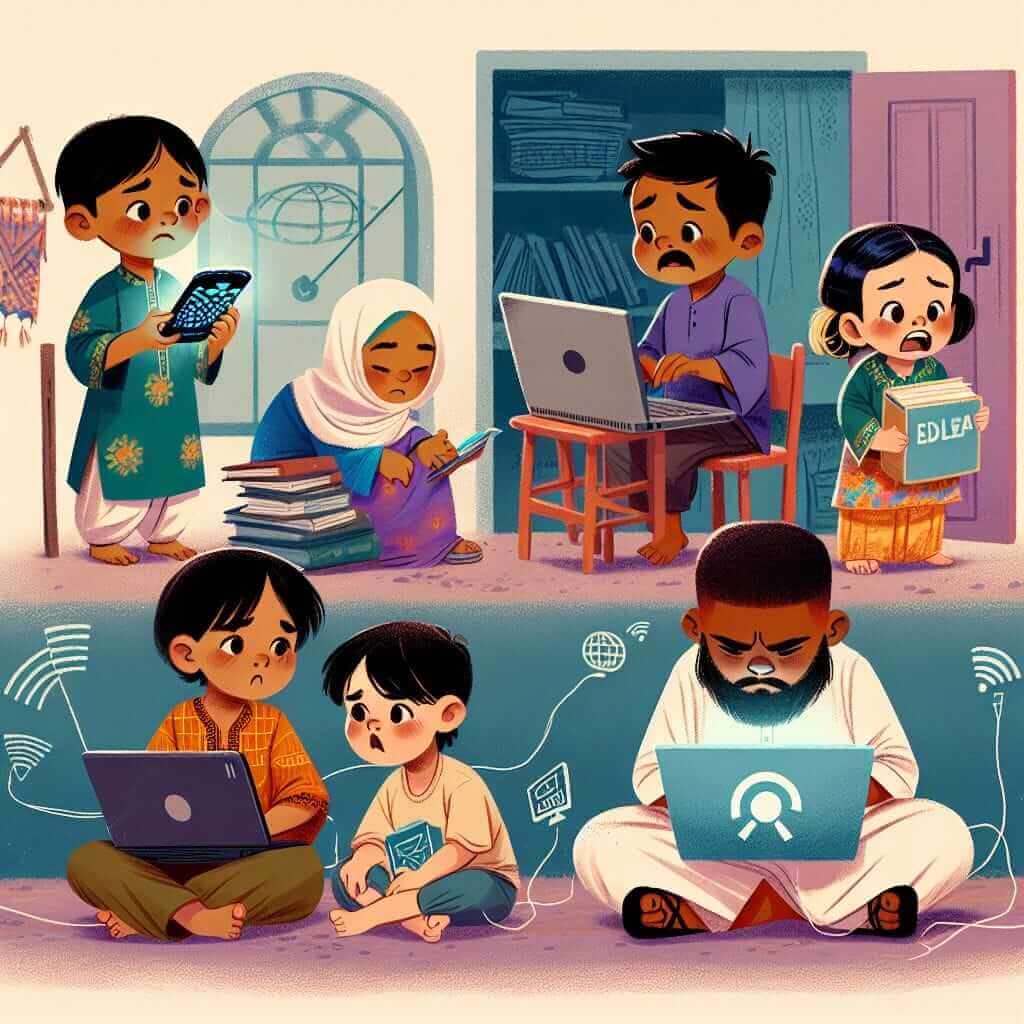The IELTS Reading test is a pivotal part of the IELTS examination, assessing your ability to understand and interpret English texts of various difficulty levels. The topic “How does remote learning affect educational outcomes?” is timely and prevalent, especially in the wake of the global shift to digital education due to the COVID-19 pandemic. This topic not only connects with numerous IELTS questions but also reflects the growing discourse on education technology and its efficacy. Let’s delve into a detailed, IELTS-style Reading practice centered around this theme.
Practice Test: Remote Learning and Educational Outcomes
Reading Passage: Remote Learning and Educational Outcomes
Text Difficulty: Medium
Remote learning has rapidly revolutionized traditional educational paradigms, a transformation propelled by technological advancements and the necessity brought forth by the COVID-19 pandemic. The shift from conventional, in-person instruction to online platforms has had a profound impact on educational outcomes, engendering both benefits and challenges.
One of the primary advantages of remote learning is its accessibility. Students from various geographic locations can access high-quality education without the constraints of physical distance. This democratization of education allows for an inclusive learning environment, fostering equality in educational opportunities. Additionally, remote learning facilitates flexibility in scheduling, accommodating the diverse needs of learners, and enabling them to study at their own pace.
However, the transition to remote learning is not without its drawbacks. One significant concern is the digital divide, where students with limited access to technology or stable internet connections are disadvantaged. This disparity can exacerbate existing educational inequities, potentially leading to poorer educational outcomes for underprivileged students.

Moreover, the lack of face-to-face interaction in a remote setting can hinder the development of crucial social skills and reduce opportunities for collaborative learning. Educators have also noted challenges in maintaining student engagement and motivation in a virtual environment. The absence of a structured classroom setting can lead to distractions and lower levels of participation.
Research on the impact of remote learning on academic performance shows mixed results. While some studies indicate that remote learning can be equally effective as traditional methods, others suggest it might not be as conducive to specific types of learners, particularly those who thrive in interactive and hands-on learning environments. Teacher preparedness and the quality of online resources also significantly influence the effectiveness of remote learning.
In conclusion, remote learning has both facilitated and complicated educational delivery and outcomes. By addressing technological disparities and incorporating strategies to engage learners effectively, the potential of remote learning can be maximized, ensuring it complements rather than diminishes traditional educational experiences.
Questions
Multiple Choice
-
What is one of the main advantages of remote learning cited in the passage?
a. Reduced cost for schooling
b. Accessibility for students in various locations
c. Improved academic outcomes for all students
d. More homework for students -
What is a major drawback of remote learning highlighted in the text?
a. Increased cost of education
b. Fixed and inflexible schedules
c. The digital divide
d. Overcrowded virtual classrooms
True/False/Not Given
- Remote learning ensures that all students have equal access to education. (True/False/Not Given)
- Research unanimously agrees that remote learning is as effective as traditional classroom learning. (True/False/Not Given)
Answer Key
-
b. Accessibility for students in various locations
- Explanation: The passage specifically mentions that one of the primary advantages of remote learning is its accessibility for students from different geographic locations.
-
c. The digital divide
- Explanation: The passage highlights the digital divide as a significant drawback, noting the disadvantage for students with limited access to technology or internet.
-
False
- Explanation: The passage implies that accessibility is a benefit but also acknowledges the digital divide, which suggests that not all students have equal access.
-
Not Given
- Explanation: While the passage notes mixed research results, it does not unequivocally state that research unanimously agrees on the effectiveness of remote learning compared to traditional methods.
Common Errors
Common pitfalls in this type of reading exercise include misinterpreting the advantages and disadvantages mentioned and failing to recognize implicit information. It’s crucial to read the text carefully to understand nuances and avoid assumptions.
Vocabulary
-
Paradigms (noun): /ˈpærədaɪmz/ – A typical example or pattern of something.
- Usage: The new educational paradigms emphasize remote learning.
-
Democratization (noun): /dɪˌmɒkrətaɪˈzeɪʃən/ – The action of making something accessible to everyone.
- Usage: Remote learning has led to the democratization of education.
-
Disparity (noun): /dɪˈspærɪti/ – A great difference.
- Usage: The disparity in access to technology affects educational outcomes.
Grammar Focus
-
Passive Voice: Used to highlight the action more than the subject.
- Example: “The shift from conventional instruction to online platforms has been propelled by the COVID-19 pandemic.”
-
Modal Verbs: Used to express possibilities or challenges.
- Example: “Remote learning can hinder the development of crucial social skills.”
Conclusion
To excel in the IELTS Reading test, understanding both the advantages and challenges of remote learning is crucial, particularly as it remains a current and pervasive topic. Practice with varied question types and focus on nuanced information to enhance comprehension and performance.